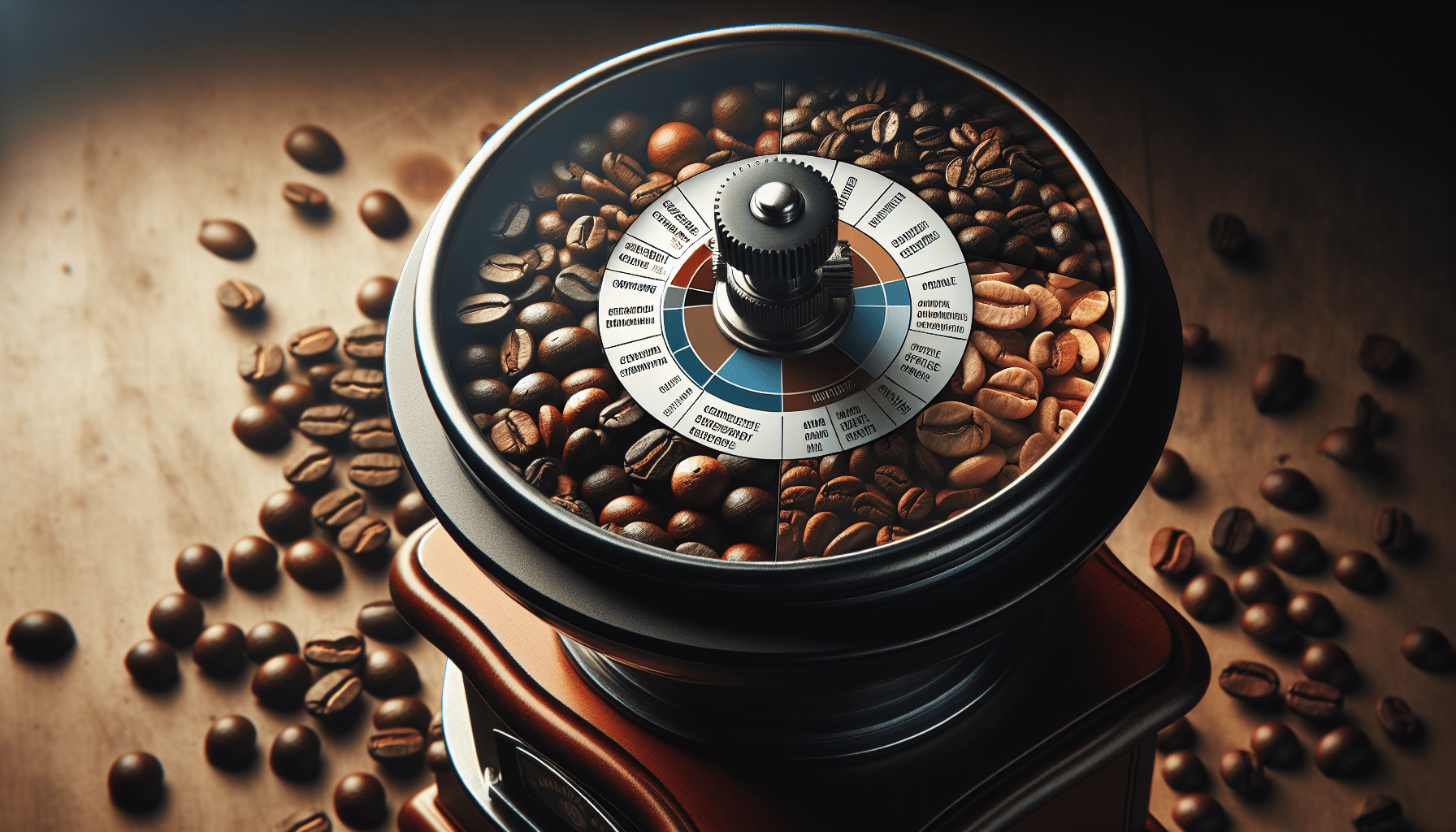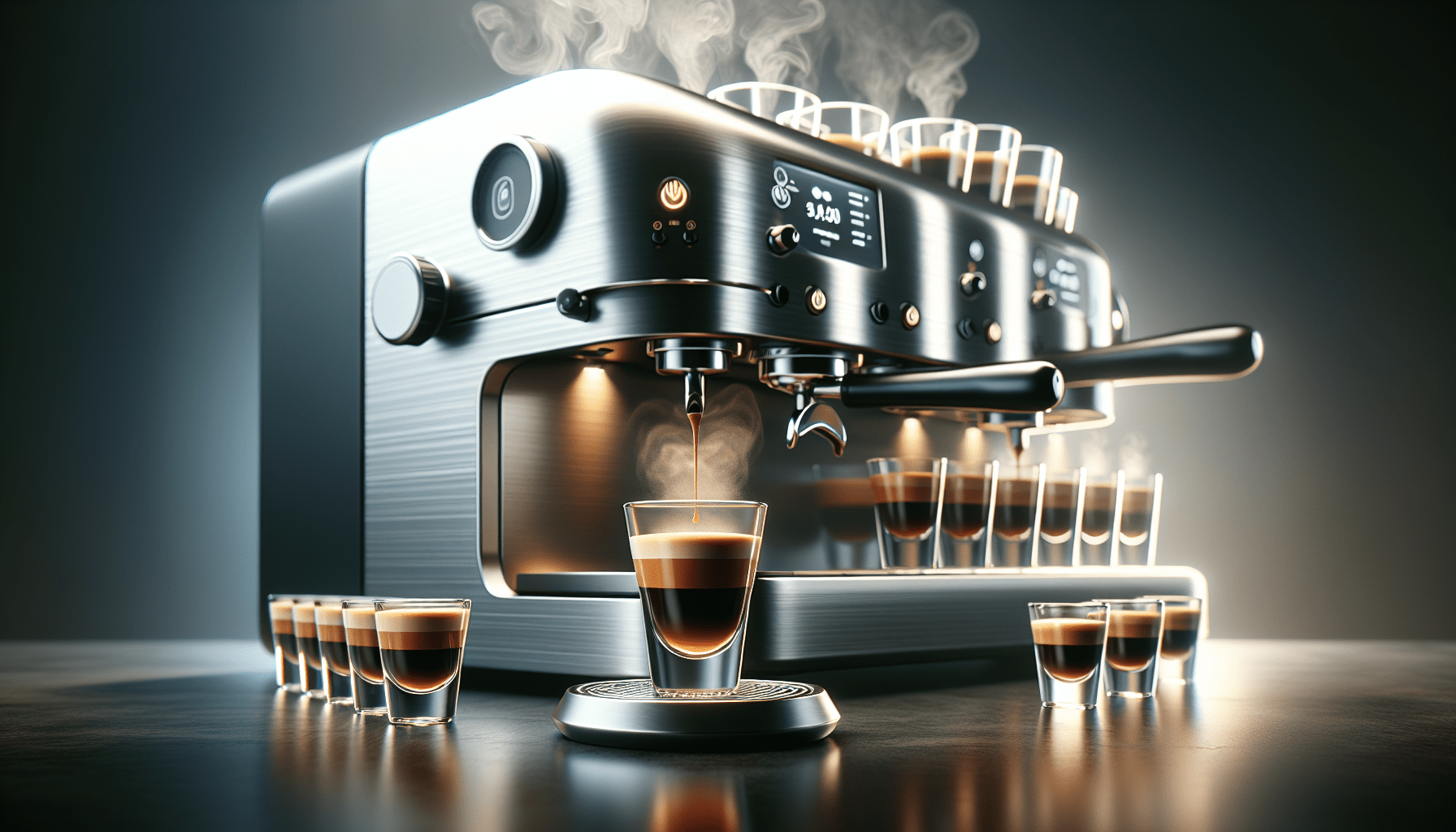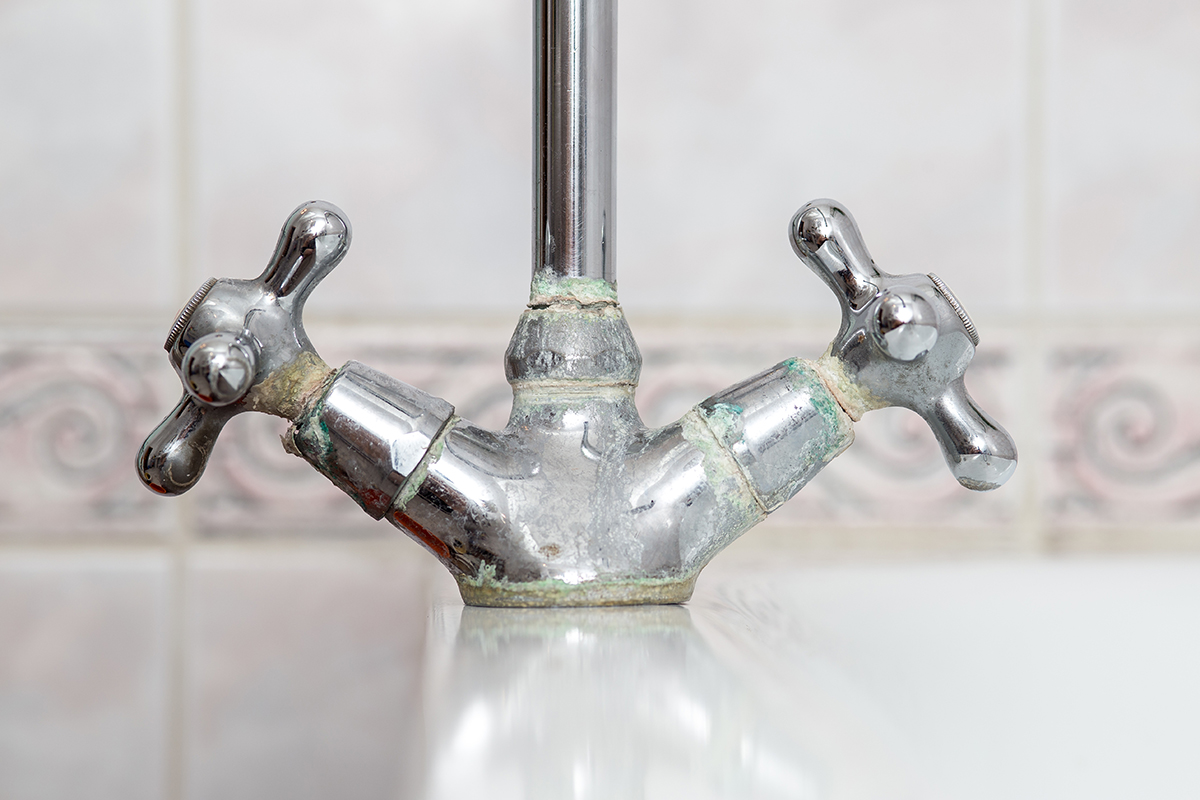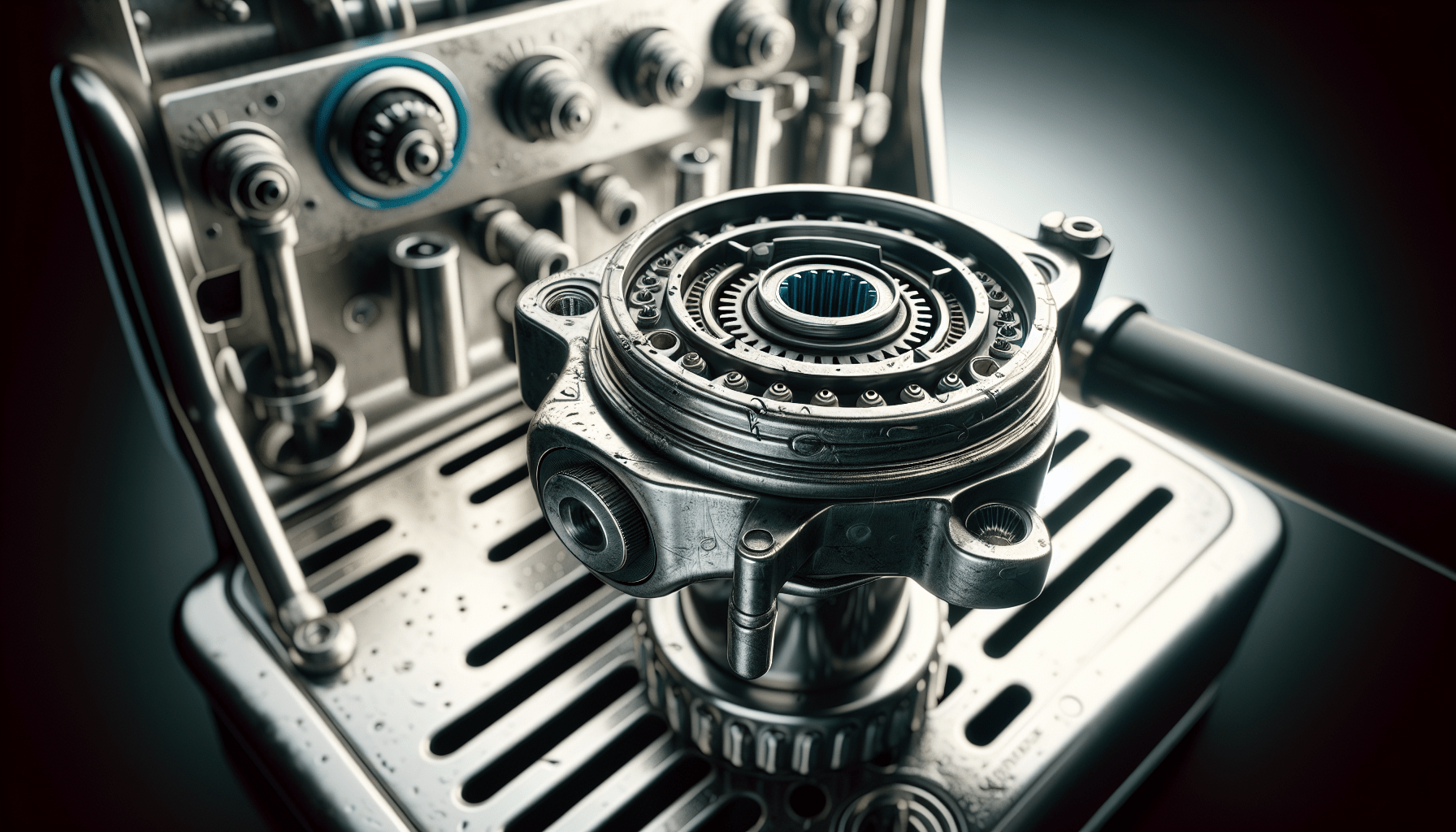Welcome to a helpful guide on adjusting shot timing and extraction for different coffee blends! As a coffee enthusiast, you may have noticed that each type of coffee bean requires unique brewing methods to achieve the perfect flavor profile. By understanding how to adjust shot timing and extraction for different blends, you can unlock a world of delicious and well-balanced cups of coffee. Whether you prefer a rich and bold espresso or a smooth and fruity pour-over, this article will provide you with the knowledge and confidence to tailor your brewing technique to suit your favorite coffee blends. So grab your favorite mug and let’s dive into the art of adjusting shot timing and extraction! Can I adjust the shot timing and extraction for different coffee blends?
Understanding Shot Timing and Extraction
When it comes to making a perfect cup of espresso, shot timing and extraction play a crucial role. Shot timing refers to the amount of time it takes for water to pass through the coffee grounds in your espresso machine, while extraction is the process of dissolving and extracting the flavors from the coffee beans. Understanding how these factors work together is key to adjust them for different coffee blends.
Importance of Shot Timing
Shot timing is essential because it determines the balance of flavors, acidity, and bitterness in your espresso. A shot that is pulled too quickly may result in under-extraction, leading to a weak and sour taste. On the other hand, a shot that is pulled too slowly can lead to over-extraction, resulting in a bitter and unpleasant flavor. Finding the right balance in shot timing is crucial to bringing out the best flavors in your coffee blend.
Significance of Extraction
Extraction is the process by which water dissolves the soluble compounds in coffee grounds, resulting in the extraction of flavors, oils, and other desirable elements. Proper extraction is essential to achieve a well-balanced cup of espresso. Over-extraction can lead to a bitter and harsh taste, while under-extraction can result in a weak and sour flavor profile. Adjusting the extraction process allows you to control the flavor profile and intensity of your espresso.
Factors Affecting Shot Timing and Extraction
Several factors can affect shot timing and extraction, including the type of coffee beans used, grind size, water temperature, and pressure. Understanding how these factors influence the brewing process is key to adjusting shot timing and extraction for different coffee blends.
Coffee Beans
The type of coffee beans used in your espresso blend can significantly impact shot timing and extraction. Different coffee beans have varying levels of density, oil content, and solubility, which can affect how quickly water passes through them. Lighter roast coffee beans may require a longer shot time to fully extract their flavors, while darker roast beans may need a shorter shot time to avoid over-extraction.
Grind Size
Grind size plays a crucial role in shot timing and extraction. The size of the coffee grounds determines how quickly water can pass through them and extract flavors. Finely ground coffee beans typically require a shorter shot time and finer grind size to achieve proper extraction, while coarsely ground beans may need a longer shot time and coarser grind size.
Water Temperature
Water temperature is another critical factor that affects shot timing and extraction. The ideal water temperature for brewing espresso is between 195°F and 205°F. Water that is too hot can lead to over-extraction, while water that is too cold may result in under-extraction. Adjusting the water temperature based on the coffee blend you are using can help achieve optimal shot timing and extraction.
Pressure
The pressure at which water is forced through the coffee grounds also plays a significant role in shot timing and extraction. The standard pressure for brewing espresso is around 9 bars, but this can vary depending on the type of coffee blend and desired flavor profile. Adjusting the pressure can help control the flow rate and extraction efficiency, resulting in a more balanced and flavorful cup of espresso.
Adjusting Shot Timing and Extraction for Different Coffee Blends
Now that you understand the importance of shot timing and extraction, as well as the factors that influence them, let’s explore how you can adjust these variables for different coffee blends to achieve the perfect cup of espresso.
Light Roast Coffee Beans
Light roast coffee beans are known for their bright acidity, floral notes, and fruity flavors. To achieve the best results with light roast beans, it is essential to adjust the shot timing and extraction to bring out their delicate flavors. Light roast beans typically require a longer shot time and finer grind size to fully extract their complex flavors without over-extraction.
Recommended Settings for Light Roast Coffee Beans
- Shot Timing: 25-30 seconds
- Grind Size: Fine
- Water Temperature: 195°F – 200°F
- Pressure: 9 bars
Adjusting the shot timing and extraction based on these recommended settings can help you achieve a well-balanced cup of espresso with bright acidity, floral aromas, and fruity undertones.
Medium Roast Coffee Beans
Medium roast coffee beans strike a balance between acidity and sweetness, with caramel and chocolate notes. Adjusting the shot timing and extraction for medium roast beans can help enhance their rich flavors and create a smooth and well-rounded espresso. Medium roast beans typically require a moderate shot time and medium grind size to extract their full flavor profile.
Recommended Settings for Medium Roast Coffee Beans
- Shot Timing: 20-25 seconds
- Grind Size: Medium
- Water Temperature: 200°F – 205°F
- Pressure: 9 bars
By following these recommended settings, you can bring out the caramel and chocolate notes in medium roast coffee beans, resulting in a delicious and balanced cup of espresso.
Dark Roast Coffee Beans
Dark roast coffee beans are known for their bold and intense flavors, with notes of bittersweet chocolate and roasted nuts. Adjusting the shot timing and extraction for dark roast beans is crucial to prevent over-extraction and bitterness while still extracting their rich flavors. Dark roast beans typically require a shorter shot time and coarser grind size to avoid over-extraction.
Recommended Settings for Dark Roast Coffee Beans
- Shot Timing: 15-20 seconds
- Grind Size: Coarse
- Water Temperature: 195°F – 200°F
- Pressure: 8 bars
Following these recommended settings can help you achieve a well-balanced cup of espresso with the bold and intense flavors characteristic of dark roast coffee beans.
Experimenting with Different Coffee Blends
One of the joys of brewing espresso is the opportunity to experiment with different coffee blends and adjust shot timing and extraction to create unique and customized flavor profiles. Whether you prefer single-origin beans, blends, or flavored coffees, adjusting the brewing variables allows you to tailor your espresso to your specific taste preferences.
Single-Origin Coffee Beans
Single-origin coffee beans come from a specific region or farm and offer distinctive flavor profiles based on their terroir and growing conditions. Adjusting shot timing and extraction for single-origin beans can help bring out their unique flavors and characteristics. Experiment with different brewing variables to highlight the specific notes of each single-origin coffee bean.
Blended Coffee Beans
Blended coffee beans combine beans from different regions to create a harmonious flavor profile that balances acidity, sweetness, and body. Adjusting shot timing and extraction for blended beans can help create a well-rounded and balanced cup of espresso. Experiment with different brewing settings to bring out the complexity and depth of flavor in blended coffee beans.
Flavored Coffee Beans
Flavored coffee beans are infused with various flavorings such as vanilla, caramel, or hazelnut to create unique and aromatic blends. Adjusting shot timing and extraction for flavored beans is essential to ensure that the added flavors are properly extracted without overpowering the coffee’s natural taste. Experiment with different brewing variables to find the right balance between the coffee’s base flavors and the added flavorings.
Conclusion
In conclusion, adjusting shot timing and extraction for different coffee blends is essential to achieving the perfect cup of espresso. By understanding the factors that influence shot timing and extraction, such as coffee beans, grind size, water temperature, and pressure, you can tailor your brewing process to bring out the best flavors in your coffee blend. Experimenting with different settings and variables allows you to create unique and customized espresso drinks that cater to your specific taste preferences. Next time you brew a cup of espresso, remember to adjust the shot timing and extraction based on the coffee blend you are using to enjoy a flavorful and well-balanced experience.




